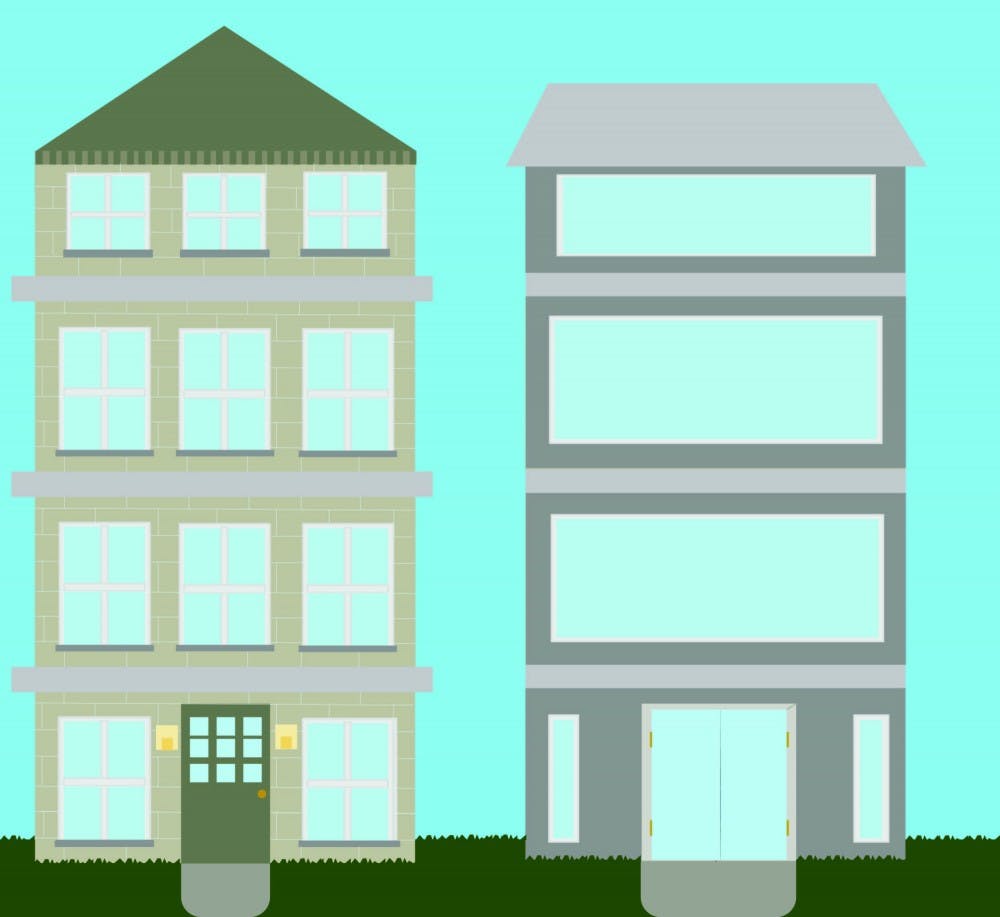IU was founded in 1820. A lot has changed since then, but there’s one thing that has never stopped since then: the construction. Everybody loves to hate it.
According to the New York Times, new technologically advanced buildings are being designed and built on university campuses with one main goal in mind: promoting creativity. These campuses breed big thinkers via environment, innovation and architecture.
At the Editorial Board, we think this is a pretty cool advancement. In recent years, IU has hopped on this bandwagon. There are tons of new and interesting buildings intended for classes and collaboration.
The Media School in Franklin Hall has an open lounge area featuring an enormous, high-tech, multi-media screen. The remodeled first floor of the Herman B Wells Library has group study pods with glass walls.
The Global and International Studies Building opens up to a tall open room with alluring staircases. These are only a few examples of IU’s new architectural ventures.
That being said, IU definitely has its fair share of older buildings. Some — cough-cough, Ballantine Hall, cough-cough, Sycamore Hall — can feel a little bit drab during lengthy classes.
While many old buildings add to the exterior charm of IU, we have to wonder if they make for the best classroom use. Whether or not IU has the same thought is uncertain, but they have talked of converting some of the older buildings into dorms in the past. We think this would be a smart move.
As for the advancements, the features in the limestone-clad IU buildings are quite similar to those popping up in other collegiate campuses across the nation.
The theory is that collaboration is heightened in these areas, and not in small and enclosed classrooms. We do agree that group work is easier in a modern space with high-tech equipment designed for students in a technologically-focused era.
Founding dean at Cornell Tech Dan Huttenlocher said in an interview with the New York Times, “Being in bigger interactive spaces encourages expansive thinking, while being in a box of a room encourages box thinking.”
In addition to the open spaces, there is also a noticeable emphasis on bringing natural light into buildings.
The Global and International Studies Building, for example, has classrooms looking over the scenic arboretum with one wall made entirely of glass. This feature alleviates the boxed-in environment that Huttenlocher mentioned before.
In the past, creative spaces were often found in, or associated with, nature. Now, clever architects are bringing these spaces indoors. It is not just universities that have opted for the high-tech architecture, though. Well-known companies that produce creative content, such as Pixar and Google, are also known to have comparable high-tech spaces.
This type of thinking correlates with the broad range of interests and tasks that university students focus on. Every side of a creative team, from those marketing, selling and managing it, to those creating it, can really benefit from these spaces.
The obvious downside to this new trend is the oh-so-dreaded construction.
Any staff member at IU will tell you they are familiar with road closings and eyesores. However, we think that construction, while at times annoying, is really just a sign of progress. IU is smart to adapt to new ideas about what really enhances collaboration and creativity.
These new buildings will help IU attract new students, appeal to the current ones and allow professors to explore new and interactive ways to help students learn. All in all, we find these new developments promising.




